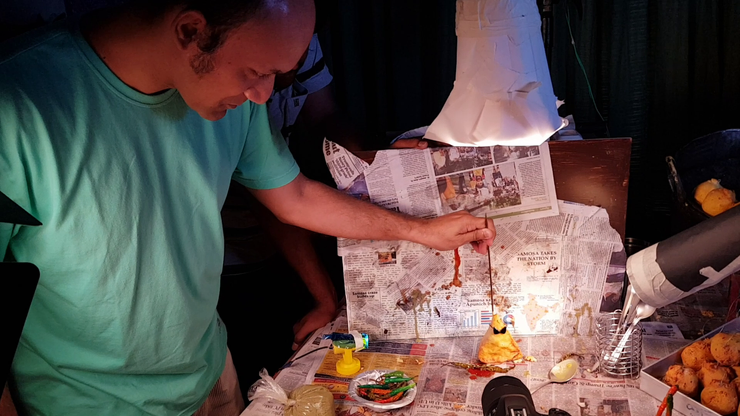By Bharath
Anand Babu is an animation artist working with Vaibhav Studios and the co-director of the popular series Lamput. In a career spanning over 12 years, Anand previously worked with Toonz Animation, Trivandrum. An admirer of Tolkien & Krazy Kat, Anand has also garnered a big fan base for his animation shorts like Nagumo & Pista over the years.
Like a lot of millennial kids in the 90s, Jungle Book fascinated Anand Babu. Growing up in Abu Dhabi, he didn’t get to watch a lot of TV and his introduction to Cartoon Network was during his visits to India. Here was a channel that played cartoons all day long and no one seemed to mind it. It was a treasure box for the little kid.
He started reading comics as he got older, but only the ones that contained visual art, like Tintin and Asterix. “The stories did not always click to me, but the art did,” he leafs through the pages of memories. He made up his mind that one day. He wanted to create something like the cartoons and comics that captivated him.
Starting with Lamput…
Anand has been working with Vaibhav Studios, Mumbai, in design & animation since 2015. He is one of the directors of Lamput. Vaibhav Kumaresh was the creator of this acclaimed animated series that aired on Cartoon Network.
Vaibhav is one of the principal figures in India’s current animation era. He founded Vaibhav Studios in 2003 and has been the brain behind several popular cartoon series besides Lamput, like Simpoo Singh and also popular commercials like the Vodafone Zumis.
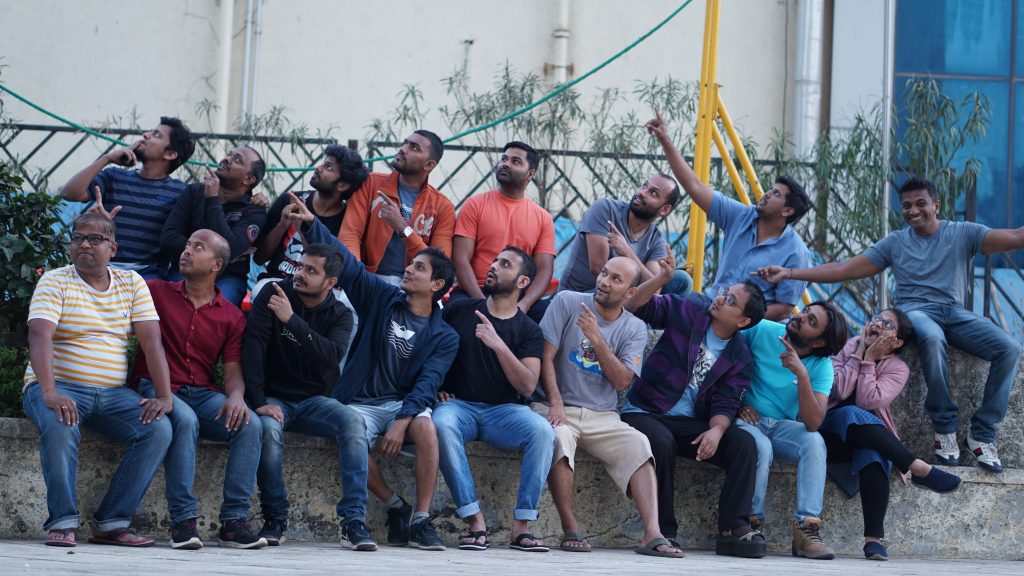
“Vaibhav contacted me after he watched my Youtube short Ekanda Chandrike the Finger song. He felt that the animation style used in it was perfect for Lamput’s characters and wanted to hire me,” Anand remembers.
Cartoon Network found the concept promising and agreed to pick up the first season of Lamput with CN Hongkong funding the project. There was no looking back for Vaibhav and his team. Season 1 of Lamput aired with 40, 15-second episodes in 2017. Anand reckons that one of the things that made Lamput click with the audiences was the absence of the barrier of language.
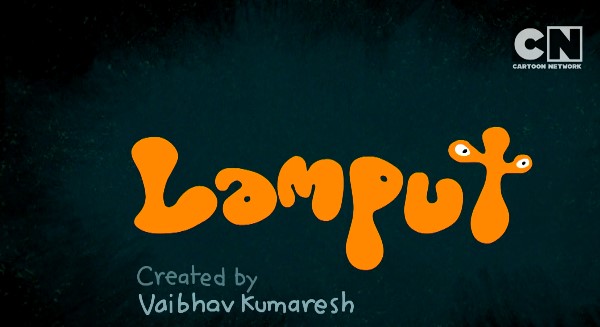
“I started drawing at the age of 2!” Anand says, laughing. “I was certain even before I passed 12th, that I wanted to get into animation. Fortunately, my parents didn’t force me to make a different choice either.”
Toonz – The First Step
Before he reached Vaibhav Studios, Anand was part of Toonz Animation, where he started not just his career, but his learning curve too.
Established in 1999 at Trivandrum, Toonz was one of the top animation companies in the country when Anand started his internship there. They had several mainstream projects under their belt, like Return of Hanuman – directed by Anurag Kashyap – and The Adventures of Tenali Raman, one of the most popular works that also inspired Anand to join them. His first project was Siva (2D) where he drew crowd characters in a frame.
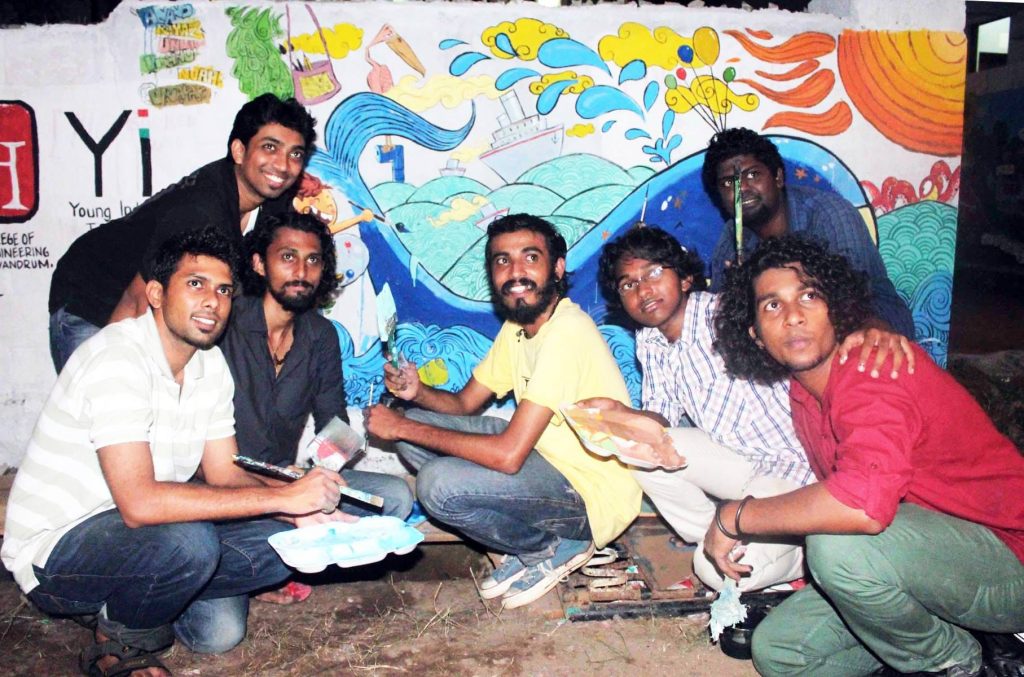
“Everything excited me,” he recalls. “When I joined Toonz (in the late 2000s) many of their brilliant animators were moving on. It was sort of like the twilight of their booming phase. Which meant that even a budding animator like me got to work on serious projects.”
He remembers that at Toonz back then, they never created short animation films right away as pitches to channels. Those were considered too long to be marketed. Instead, 2-4 min promo videos were created and presented. If one of them was found to be promising and given the green signal, a trailer was made, before moving on to the actual short film.
3D, he says, was quite expensive in those days unlike today, and most of Toonz’s projects were in 2D. The first step was always drawing on paper, Anand reminisces about his early days.
“Toonz was a place where if your ideas were original and interesting, they would be nurtured. The seniors were really supportive. I remember I had this spark for a Kalaripayattu story once. And even though I had little clue about the martial art per se, I was encouraged to explore the idea and put my thoughts into sketches.”
The A-Z of Animation
“That’s a very vague concept actually,” Anand ponders for a few moments before replying to what the “whole process” of an animation work would be like.
“Drawing an outline is the basis of any story,” he continues. “There are several aspects associated with an animation work but I personally enjoy the part of storytelling and movement the most.”
He is of the opinion that having a clear, finished storyboard is essential before you start the actual animation process. “We all have our own way of doing such things according to our strengths. I like to do the scripting and storyboard simultaneously. Vaibhav is someone who finishes the script first before moving on to the storyboard. Another friend of mine starts with the storyboard straightaway and so on.”
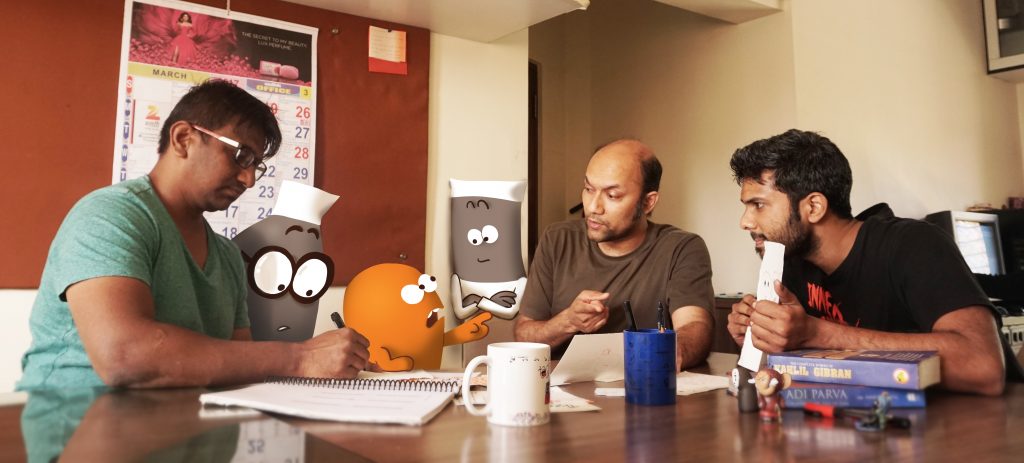
Time and Resources
Animation enthusiasts would remember the praise that Incredibles 2 trailer received upon its release, for the attention to detail of the threads in a character’s shirt. And while the skills behind such work are certainly praiseworthy, Anand also thinks it’s essential to talk about how quality and the resources go hand in hand.
Everything comes down to the resources at hand, which ultimately brings into the equation the budget as well. “Let’s say, I have to animate a scene of a character flying to the moon and back. And I set a realistic timeline of 3 months to finish it. Now, we are given a deadline of one month to deliver that. What do we do? We compromise on certain aspects – the caricatures, the specifics; even the story gets shrunk,” he elaborates.
The original soul of the work will be kept intact, he adds, and the end product will entertain the audiences. But they wouldn’t know about the compromises that happened behind it – the “could have been”.
A lot of 3D films these days try to emulate reality, but Anand says he prefers to create an “experience of reality” rather. There is a misconception that in animation there should always be a degree of exaggeration from reality to make it work for the viewers. He feels that ultimately, it’s up to the creator to decide how to go about animating a story.
But naturally, most animated works start off by taking creative liberties with the characters and settings. “The jungle in Jungle Book wasn’t an exact representation of an Indian jungle, was it? And in Aladdin, Arabia was Hollywood’s mental projection of it,” he reminds us.
The Process, the Philosophies
Will someone who draws well likely be a good animator?
Not necessarily, Anand opines. But he reckons that a good storyteller will be skilful in creating a good animation film. It’s about articulating the story in your mind in the most efficient way possible, whether you’re speaking or sketching.
The work culture can be quite a significant factor in a field like animation. The creative freedom he got at Vaibhav Studios, especially while working on Lamput, was quite important for him. The light humour that’s reflected in most of their works is characteristic of their own personalities, he says smiling.
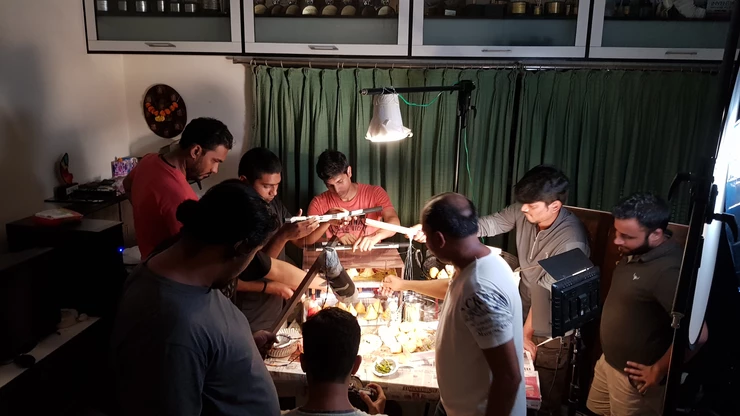
While Anand himself may come across in the conversation as a serenely serious person, the wacky humour in the animated shorts that he creates from time to time, like Ekandrachandrike, Nagumo and Pista, is a testament to what he said above.
Experiences and Creating Connections
“When I reached Vaibhav Studios, I was evolving as a person too emotionally. Ups and downs happened in life and it was reflecting on my work too, I felt. I’m growing as a person even now, especially in the last 3 years since I turned 30 when I picked up reading also quite a bit. And I have this feeling that people tend to dissociate books, movies, animation, etc. from actual life. Whereas, whatever we create in connection with real-life will connect with audiences easier and deeper.”
As kids, when we wrote a story or drew something, it was heavily influenced by our favourite content. And it doesn’t completely change over the years, he says, except that we learn how to add more layers based on our experiences and ideas to something.
Personally, he enjoys animating ideas that aren’t too mainstream, yet original. “Say, I see a lot of people around me wearing Mundu, but I don’t see them in animated works much. So, I will try to bring them on screen.”
Animation in India – What Does the Future Hold?
“I feel like we are going through the golden age of animation here now.”
Having been associated with the animation industry for nearly a decade-and-a-half now, Anand has been a witness to multiple evolutionary phases of it. And he notes that such steps were made possible in each era by those animation artists who took that one big step forward. Vaibhav, according to him, is someone in this generation who is carrying that baton forward from his peers.
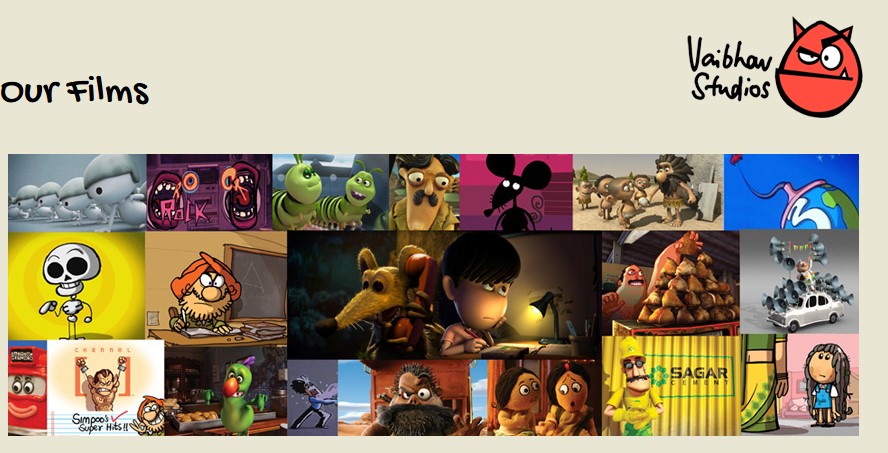
While the quality of work and the industry itself has traversed miles in India, Anand feels that there’s this false notion of needing to “dumb down” humour to make it appealing for kids, which is clearly echoed in the content being pushed more.
Indigenous Ideas and Advertising
Nevertheless, the rise of indigenous ideas and cartoons is something to be very excited about, he thinks. And the quality of short animation content (films) that comes these days is terrific too. The B & W short – Kandittund! (Seen it!) – from Studio Eeksaurus is a work that greatly impressed him lately.
Anand slips in a case for the budgetary constraints faced by animators, using Kandittund’s example. “I know that Kandittund nearly took 1.5 years to make. Had that timeline been shrunk, the work probably wouldn’t have reflected the same quality.” Whether it’s a 15-second or a 2-minute project, the more time you are provided for the whole process, the better it will turn out. He points out that most Disney productions take 2-3 years just for the story discussion and “polishing”, only animating them in the last year.
Using animation in the advertisement platform in India has been a revelation in the recent past. Although the idea of animation here existed more as entertainment for kids before, he thinks that there is clearly a shift in the other direction now. More accessible internet and an abundance of social media/content platforms, like Youtube majorly, have caused a surge in independent content. And ultimately as the audiences’ understanding evolves, the animated industry should also evolve in different ways, he stresses the point.
Anand breaks into a laugh as he mulls over the multitude of this phenomenon though. “Because as much as you would see a lot of good content in future, you have to be equally prepared for a lot of terrible content too.”
Of Peers, Projects & Expectations
Anand throws me off guard a bit by taking the name of J.R.R. Tolkien as someone he looks up to the most as an artist. Of course, he greatly admires Bill Watterson (Calvin and Hobbes), Charles M. Schulz (Peanuts) and George Herriman (Krazy Kat) and many others. But Tolkien, to him, is an unparalleled figure for the wide range of imagination present in the LOTR series, he gushes.
“Only the books though, the movies weren’t my thing,” he adds almost dismissively.
Unsurprisingly, he does invoke the name of the great animator Hayao Miyazaki soon enough. Miyazaki’s success was that he understood life very well and Anand muses philosophically. His directorial debut – the 1978 anime series, Future Boy Conan – has a rare quality to the way the story is conveyed!
Around him, Vaibhav is undoubtedly one of the most influential figures for Anand. “He is honest with his opinions. You can pitch him an idea, he will listen patiently and then give you his candid feedback.”
Adithi Krishnadas, Kandittund’s maker, is another talented animator, with whom he has also discussed the most ideas as well, Anand notes.
“My proudest work is always the one I do at present,” he smiles. “So right now, I would have to say it is Lamput.”
But Anand and his colleagues at Vaibhav’s are set larger goals in the coming days. Their biggest project yet – the in-house animated feature film Return of the Jungle, has been in the making for several years now and is set to release by the end of the year. Lamput’s 4th season will be finished soon as well. Apart from these, Anand has been working personally on a fantasy theme titled – Kuttan the Medicine Boy.
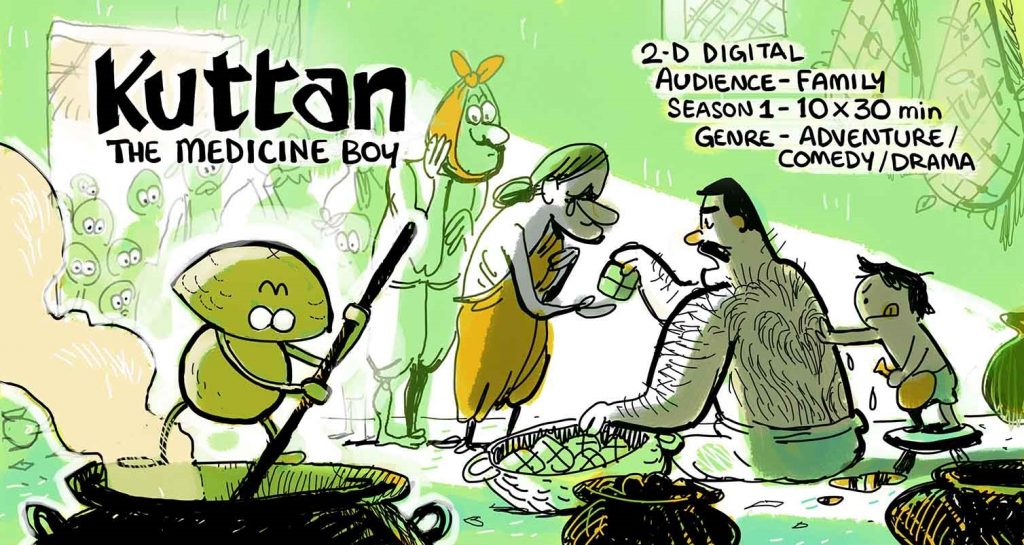
And how does a story get translated visually in his mind? Anand answers that by pulling out a notebook and sketching for me impromptu. It’s something inspired by the Batman live action series. He describes the scenes he had in mind and ends it with: “to be continued…”

